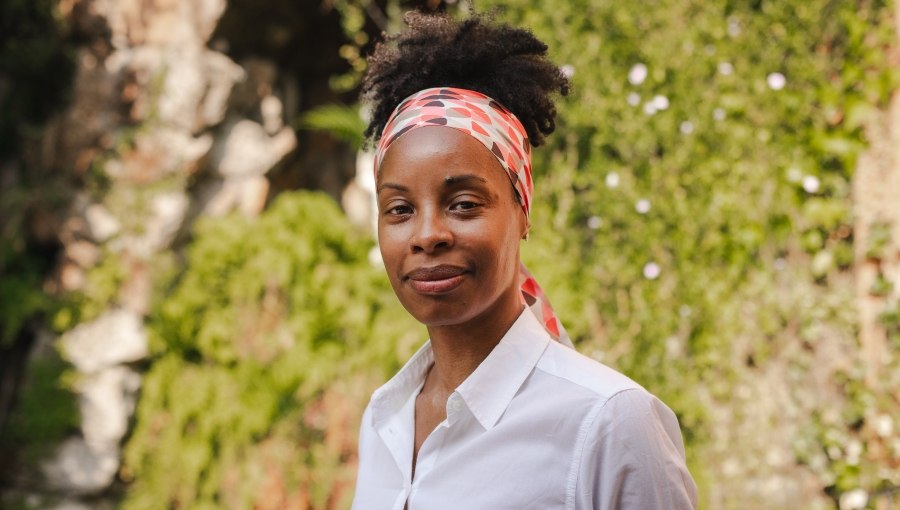Climate Change and the Energy Transition: JCU Welcomes Professor Diana Urge-Vorsatz
On December 4th, John Cabot University welcomed Professor Diana Urge-Vorsatz, from the Central European University of Vienna, for a lecture on sustainability and energy transition. The event was part of the Kushlan Lecture Series in Environmental Conservation that kicked off in 2023 with the Challenges of COP 28, and was organized by the Coordinator of Sustainability for Education Initiatives and Executive Director of the Graduate Center, Michèle Favorite.

Urge-Vorsatz is currently a professor at the Central European University in Vienna, and she is Vice Chair of the Intergovernmental Panel on Climate Change (IPCC). In the Sixth cycle of IPCC she serves as Vice Chair of Working Group III on Mitigation, as well as Coordinating Lead Order of both the Fourth and Fifth assessment reports of the IPCC.
JCU President Franco Pavoncello introduced Professor Urge-Vorsatz as a “world class scientist” appointed by the UN to assess climate change. Pavoncello recognized the timeliness of the topic, pointing out that “what we use in industry, homes, cities, transportation accounts for about a quarter of all greenhouse gas emissions, and therefore has a major impact on climate change.” According to Pavoncello, the employment of sustainable forms of renewable energy and energy-efficient technologies has come a long way since the 2015 Paris Agreement but still has a long way to go before it reaches the ambitious net-zero emission goal set for 2050.
Professor Diana Urge-Vorsatz invited the audience to consider that disasters such as the recent 2024 floods in Spain, as well as other recent extreme weather events, are getting more common and more severe due to “human-caused climate change.” She also pointed out how the planet’s temperature has been rising in recent years, and how younger generations are growing up in a “completely different climate” from what older generations experienced. Most of the world infrastructure that we rely on was built for a climate that no longer exists.
The International Monetary Fund highlights that accelerating the transition to net-zero emissions will significantly boost global GDP, while climate damage could soon outweigh average economic growth. Despite this, governments are still pouring over $7 trillion a year into fossil fuel subsidies, an amount far greater than the investments in clean energy. However, the good news is that reaching net-zero carbon dioxide emissions can halt global warming, making it a crucial goal for the next decade. Achieving this would stabilize the climate and prevent catastrophic warming, but it requires immediate action, as even an increment of a few more degrees could make it harder for human civilization to survive.

While it might seem impossible to limit global warming to 1.5°C, different scientific models suggest that it is still achievable, “though it won’t be easy,” said Professor Urge-Vorsatz. Solutions like moving away from fossil fuels, promoting renewable energy sources like wind and solar, and improving energy storage are key. Renewable energy, particularly solar, has already made significant progress, with solar prices dropping 99.9% over a few decades, and projections show solar will dominate global renewable energy growth through 2030. However, despite these advances, global carbon emissions are still expected to increase slightly in 2024, indicating that while we are succeeding in scaling up clean energy, our growing demand for energy is outpacing these efforts.
Professor Urge-Vorsatz emphasized Europe’s achievement of reducing electricity demand by 13% since 2008, despite economic growth, increased population, and rising electricity consumption in areas like transportation and artificial intelligence. This reduction is significant, but more is needed.
The focus on reducing energy is vital to achieve a low-risk, net-zero future. Global emissions could be contained by 40-70% by focusing on demand, without compromising our well-being. Examples such as using less concrete in construction, improving building designs, and “retrofitting” existing structures demonstrate that less energy use can result in greater comfort and lower costs. Energy use can be reduced significantly without compromising quality of life, as shown in energy-efficient buildings that provide services and improved living conditions. According to Professor Urge-Vorsatz, scaling up renewable energy will not be enough for a net-zero transition, and demand reduction is equally imperative.
By reducing overall energy and material demand, we can achieve a more sustainable, comfortable, and healthier future, especially by integrating nature into our cities and buildings. This change requires bold leadership, and Professor Diana Urge-Vorsatz called on students and future leaders to take on this challenge.





